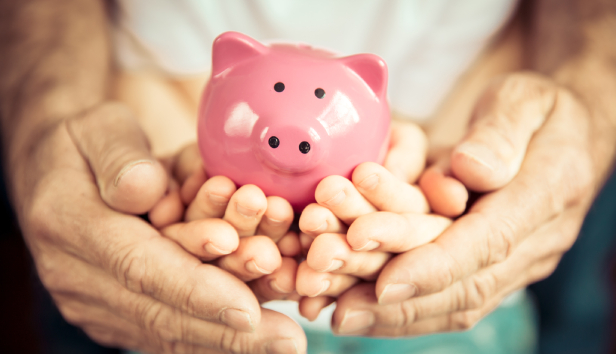
This article is for general guidance only and is not financial or professional advice. Any links are for your own information, and do not constitute any form of recommendation by Saga. You should not solely rely on this information to make any decisions, and consider seeking independent professional advice. All figures and information in this article are correct at the time of publishing, but laws, entitlements, tax treatments and allowances may change in the future.
You may well have heard about reduced Capital Gains Tax (CGT) exemptions, but it’s not the only tax allowance to have been shrunk in recent years.
The dividend allowance, the amount of income from dividends a person is able to receive tax free, has been hit too, down to just £500 for the 2024-25 tax year.
As a result, many more people will start paying, or will need to pay more, tax on dividends.
Laura Suter, Director of Personal Finance at investment platform AJ Bell, says: “The total dividend tax bill for the nation has increased, and we are expected to collectively pay almost £18 billion in dividend tax this tax year – an increase of £1 billion compared to last year, according to Government figures.
“According to figures released by HMRC, under a Freedom of Information request made by AJ Bell, 1,115,000 extra people will pay dividend tax this tax year as a result of the cuts.”
Dividends are money earned from holdings in a company, and as they’re a form of income, they’re subject to tax.
These holdings not only include business owners and partners or shareholders in private businesses, but also people with money invested in the stock market. This could be from a holding of shares or money in an investment fund.
The amount of tax paid on dividends is linked to the income tax band of the person who receives them – but at a lower rate.
The dividend tax rate for basic rate taxpayers is, at the time of writing, 8.75%, rising to 33.75% for higher-rate taxpayers and peaks at 39.35% for those who pay the additional rate.
Bear in mind the relevant tax bracket is based on overall income for the year, including money earned from dividends.
That means dividend income could, potentially, push someone into a higher-rate tax bracket.
Alice Haine, Personal Finance Analyst at investment platform Best Invest, explains: “Any dividend income that falls within the Personal Allowance of £12,570 – the amount you can earn without paying tax – is not liable for tax, plus taxpayers also have a dividend allowance each year.
“This has endured some hefty cuts in recent years, with the annual dividend allowance halving to just £500 at the start of the 2024-25 tax year, having already been cut from £2,000 to £1,000 in the previous tax year.
“When you consider the dividend allowance was £5,000 as recently as 2017-18, it’s understandable why investors are now paying more attention to this tax.”
.jpg?sc=max&mw=800&h=450&la=en&h=731&w=1300&hash=C3267814FA59472E1D6B9AA60CEA17C4)
Dividend tax won’t be charged on any money held in an investment that ‘s sheltered from tax, such as in a stocks and shares ISA. It will only impact investments held outside these wrappers, often in general investment accounts.
“Moving investments into a tax-protected ISA or pension keeps future returns out of the reach of tax charges,” says Haine. “To do this, investors can sell shares or funds using their current exemptions and repurchase them with an ISA – a process known as ‘Bed and ISA’.
“A similar process known as ‘Bed & Pension’ applies to investments moved into a pension, such as Self-Invested Personal Pension (SIPP).”
Investors need to be mindful of CGT through this process, though. For example, if the amount you transfer from a general investment account into an ISA causes a breach of the capital gains allowance (currently £3,000 a year), it could incur a CGT charge on that transaction.
For more information, our guide to Capital Gains Tax will walk you through the various scenarios, but any unsure investors should seek out professional advice to understand their options.
For those married or in a civil partnership, there’s more that can be done to cut the tax bill. Haine says: “Married couples and civil partners have a tax advantage over their unmarried peers - the opportunity to make ‘interspousal transfers’ where savings and investments can be switched tax-free between spouses.
“This allows the couple to make use of two sets of allowances, such as dividend allowances and capital gains exemptions, to reduce the overall tax hit for the family.”
She adds: “Before transferring assets to your other half, remember they become the full, legal owner of the assets, so this is an unwise move if the relationship is on rocky ground.”
Transferring assets can be a tricky process, so getting professional advice may be beneficial here as well.
Suter explains: “To work out your dividend tax bill, you need to add any dividends you earned in a year to your other income, to work out your tax band.
“You would then not pay any tax on the first £500 of dividends and the remainder would be taxed based on your tax band.”
(As a reminder: 8.75% for basic rate taxpayers, 33.75% for higher rate taxpayers and 39.35% if they pay the additional rate. More information on the tax thresholds can be found on the Government’s website).
If someone needs to pay dividend tax, it’s essential they inform HMRC.
Claire Roberts, Tax Partner at accountants Moore Kingston Smith, explains: “If you do not usually send a tax return, you need to register by 5 October following the end of the tax year in which the dividends are received.
“However, if you receive less than £10,000 in dividends in a tax year and do not already send a tax return, you can ask HMRC to change your tax code to collect the tax from your pension or earnings.”

There’s billions sitting unclaimed in shares and dividends – find out if any belongs to you.

From their first savings account to their first home, find out how your gifts can make the biggest impact for your grandchildren
.jpg?la=en&h=354&w=616&hash=653168623B92F3457D40ACA115D37B3E)

.jpg?la=en&h=354&w=616&hash=458B0288E9852F4B63A433E2FDD375E7)



We're here to help you make the most with your money. With a rage of financial services designed with over 50s in mind.